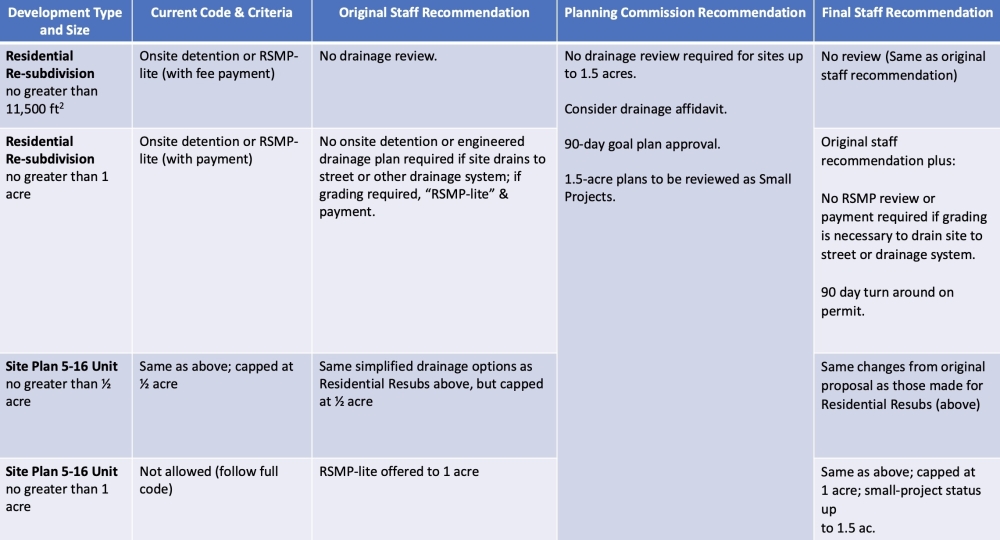The setup
A few years ago, city officials asked to exempt new housing with fewer units from more extensive development oversight. The effort was meant to speed those projects along and potentially lower end costs.
The two-part plan proposed by council member Paige Ellis first saw triplexes and fourplexes removed from Austin's lengthy, and expensive, process for site plan review. That change went into effect in 2023, and three- and four-unit projects are now treated the same as single-family homes that don't need site plans.
The second phase of "Site Plan Lite" was aimed at reducing development reviews for residential projects with between five and 16 units, or missing middle housing that's less commonly seen around town.
"We want to make sure that the red tape of trying to get through the permitting process is not what is preventing people from building housing," Ellis said in 2022.
Separately, a proposal from council member Ryan Alter would make it easier to split up residential lots into smaller parcels. Alter said that plan would cut administrative costs and time, allowing for smaller and potentially more affordable housing options in neighborhoods.
After months of community engagement and commission reviews, Site Plan Lite Phase 2 and the subdivision update are now up for final approval. The changes were postponed by council Feb. 13 and could be voted on in the coming weeks.
The details
The limited site plan requirements are intended to offer a simpler and more accessible review process for housing like smaller infill projects that aren't at the scale of something like a large apartment complex.
“This is existing communities, existing neighborhoods, and how do we have context-sensitive redevelopment in these areas?” Keith Mars, assistant director of the Development Services Department, told council members Feb. 11.
If both updates are approved, Mars said a vast majority of Austin's residential land—thousands of properties in total—could use the streamlined reviews. About 80% of smaller single-family lots would move through the simpler subdivision process if desired, while about 90% of lots with the appropriate zoning for five- to 16-unit projects could use the Site Plan Lite addition.
While the changes were launched by Austin officials, Mars said they line up with existing policy in other Texas cities. He also said he believes the new processes will expand the opportunities that individual residents and homebuilders have with their land, and be accessible for anyone to take advantage of.
“It is avoiding the jargon, it is avoiding the acronyms. It is forms and process that is understandable to our community so that we reduce the barriers to participating in this," he said. "It could be your next-door neighbor that has interest in subdividing land and keeping the property in the family, all the way to someone that is ... a developer that is putting homes on the ground."
Zooming in
One aspect of city development code that won't be a focus of the streamlined process is city drainage requirements.
Landowners and builders working on either small housing construction or a subdivision plan can be required to either add features like a detention pond alongside their project, or pay into Austin's Regional Stormwater Management Program supporting city infrastructure projects. Under Site Plan Lite and the new subdivision rules, those requirements would no longer apply in many cases.

“We hear that concern loud and clear, and we’re going to make sure that we have checks and balances in the process. Even as whatever policy gets moved forward, we’re going to have evaluation to make sure that we’re keeping an eye on it,” Watershed Protection Department Director Jorge Morales said.
Alter said he's continuing to look over the new policies and hopes to ensure they meet his original goals while maintaining safeguards for residents.
"The proposed ordinance has come a long way thanks to the hard work by staff and the community," he said in a statement. "My colleagues and I are closely reviewing the draft to ensure that it makes housing cheaper and easier to build while maintaining flood mitigation standards and environmental protections, and I look forward to supporting a policy that achieves these goals."





